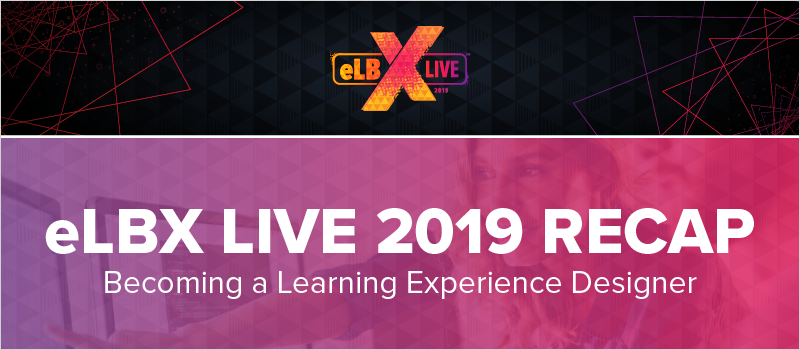
At eLBX Live 2019, Marty Rosenheck, eLearning Brothers Director, Talent Development Consulting, gave a presentation on becoming a learning experience designer.
Over the past several years, the term “Learning Experience Design” has slowly been growing in popularity among the eLearning industry.
In much the same way that responsive design for eLearning courses slowly grew from this exciting idea that everyone was talking about, but no one was actually implementing to what is almost an expected standard today, we’ve been talking about learning experience design for a while now and it seems we’re getting closer to the tipping point where we all transition from instructional design to learning experience design.
That's the hope, at least. As Marty shared at eLBX Live 2019, he did an informal survey of his LinkedIn connections and the results showed that job titles certainly have not caught up to this emerging trend, yet.
Let’s talk about what Learning Experience Design is. It’s a cross-discipline, learner-centered, goal-oriented method of creating learning experiences, not just courses. We know now that formal instruction is only a small part of learning. Research shows that 90% of learning is done through on-the-job experience and informal learning.
“Learning Experience Design is the learner-centered process of facilitating the learning and application of knowledge and skills (expertise, proficiency) by providing a set of learning activities (formal, informal, and experiential) supported by content, feedback, and technology.”
Learning experience design stems from a handful of different disciplines: cognitive science, design thinking, user experience design, content design and curation, learning technology, data and analytics.
Humans are constantly constructing new knowledge and skills through experience. Learning experience designers must support and accelerate people's construction of knowledge and skills, drawing on all those different disciplines mentioned above.
At eLBX Live, Marty also talked about how you can conquer learning challenges using learning experience design by incorporating feedback, mentorship, and creating a guided path to proficiency. He talked attendees through some of the parents disciplines like design thinking and user experience design.
Marty also shared a real world example learning experience design in action.
Download his presentation slides now to learn more.







